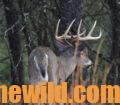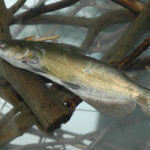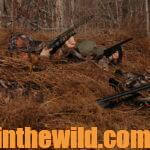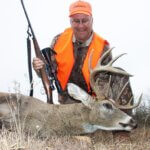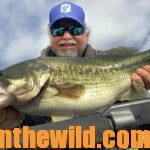Editor’s Note: You can’t bag a buck if you don’t see the animal. The key to seeing more bucks on every hunt is knowing how to choose the most-productive stand sites. Many hunters choose their stand sites using too little information. This week we’ll learn how to identify stands for next year’s deer season, or, if deer season where you hunt hasn’t ended, we’ll tell about stands you can select between now and February 10th, the end date for some deer seasons around the U.S.
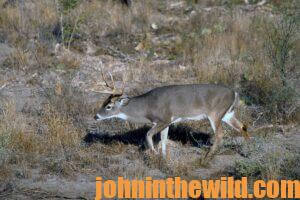 If you hunt high-pressure deer areas, one of the most-consistent stand sites you can hunt is escape trails. By assuming other hunters will spook the buck you want to take before you see him, you often can predict where you should hunt as hunting pressure builds. Whitetail escape trails usually will lead out of or into thick cover. These spots will be near or close to open woodlots, green fields and/or agricultural crops. To locate a productive escape trail to hunt over, determine where a buck should be during daylight hours as any other hunter will; then assume that that deer will be spooked. If you’re a deer, where will you run to get away from the
If you hunt high-pressure deer areas, one of the most-consistent stand sites you can hunt is escape trails. By assuming other hunters will spook the buck you want to take before you see him, you often can predict where you should hunt as hunting pressure builds. Whitetail escape trails usually will lead out of or into thick cover. These spots will be near or close to open woodlots, green fields and/or agricultural crops. To locate a productive escape trail to hunt over, determine where a buck should be during daylight hours as any other hunter will; then assume that that deer will be spooked. If you’re a deer, where will you run to get away from the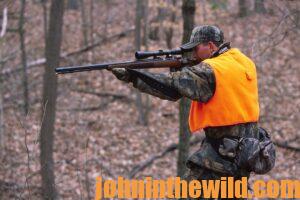 hunter in the shortest time and be able to move into thick cover where the hunter can’t see you? Or, how can you put some type of natural barrier between you and the hunter, like a mountain, a thicket, a creek or a swamp?
hunter in the shortest time and be able to move into thick cover where the hunter can’t see you? Or, how can you put some type of natural barrier between you and the hunter, like a mountain, a thicket, a creek or a swamp?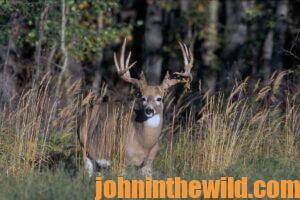
The secret to finding the best stand site on an escape trail is to look for the trail coming away from whatever barrier the buck probably has used to put between him and the hunter. For instance, on a main road with a large, open, wooded area with a thicket on the back side of the open woods, instead of taking a stand on the front side of the thicket where the buck will be entering the thick cover, go to the back side of the ticket. Look then for the escape trail coming out of the thick cover where the buck will appear.
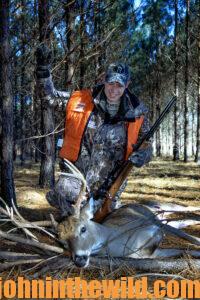
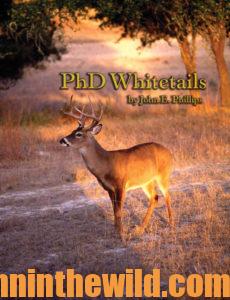 When picking a stand site on an escape trail, always pinpoint the spot where the deer leaves the barrier he uses to put protection between him and the hunter. If you’re hunting a hardwood bottom with flooded timber in it, cross the water, and get on the opposite bank from where hunting pressure will come before daylight. As the hunters begin to move into the woods, the deer often will be spooked, run through the hardwood bottom, enter the flooded timber and move out on the other side where you have your stand. Often, when a deer appears on the back side of a barrier, it will be walking slowly, will be less nervous and less likely to spot you and usually will present a better shot than if you attempt to stand on the front side of the escape barrier.
When picking a stand site on an escape trail, always pinpoint the spot where the deer leaves the barrier he uses to put protection between him and the hunter. If you’re hunting a hardwood bottom with flooded timber in it, cross the water, and get on the opposite bank from where hunting pressure will come before daylight. As the hunters begin to move into the woods, the deer often will be spooked, run through the hardwood bottom, enter the flooded timber and move out on the other side where you have your stand. Often, when a deer appears on the back side of a barrier, it will be walking slowly, will be less nervous and less likely to spot you and usually will present a better shot than if you attempt to stand on the front side of the escape barrier.
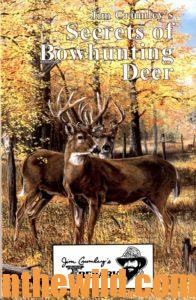 To learn more about hunting for deer, check out John E. Phillips’ deer-hunting book, “PhD Whitetails: How to Hunt and Take the Smartest Deer on Any Property,” available in Kindle and print at http://amzn.to/WIEUoo and Audible at https://www.audible.com/. You may have to copy and paste this link into your browser. (When you click on this book, notice on the left where Amazon says you can read 10% of the book for free). On the right side of the page and below the offer for a free Audible trial, you can click on Buy the Audible book. To learn even more about hunting for deer, check out John E. Phillips’ “Jim Crumley’s Secrets of Bowhunting Deer,” now available as of January 1, 2022, in Audible, as well as paperback and Kindle at https://www.amazon.com/.
To learn more about hunting for deer, check out John E. Phillips’ deer-hunting book, “PhD Whitetails: How to Hunt and Take the Smartest Deer on Any Property,” available in Kindle and print at http://amzn.to/WIEUoo and Audible at https://www.audible.com/. You may have to copy and paste this link into your browser. (When you click on this book, notice on the left where Amazon says you can read 10% of the book for free). On the right side of the page and below the offer for a free Audible trial, you can click on Buy the Audible book. To learn even more about hunting for deer, check out John E. Phillips’ “Jim Crumley’s Secrets of Bowhunting Deer,” now available as of January 1, 2022, in Audible, as well as paperback and Kindle at https://www.amazon.com/.
 On the right side of the page and below the offer for a free Audible trial, you can click on Buy the Audible book. Also John and Denise Phillips’ new book in print December, 2021, “The Recipes You Can’t Live Without,” that’s full of delicious, time-tested recipes for cooking wild game and fish and also ideas for breakfasts at your hunting club is available at https://www.amazon.com/.
On the right side of the page and below the offer for a free Audible trial, you can click on Buy the Audible book. Also John and Denise Phillips’ new book in print December, 2021, “The Recipes You Can’t Live Without,” that’s full of delicious, time-tested recipes for cooking wild game and fish and also ideas for breakfasts at your hunting club is available at https://www.amazon.com/.
Tomorrow: Late Season Water Stands for Deer

